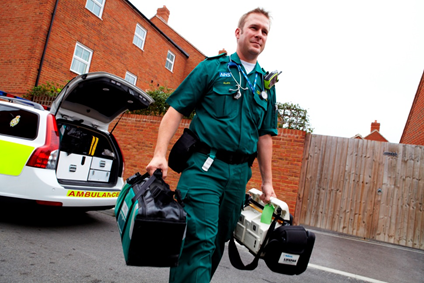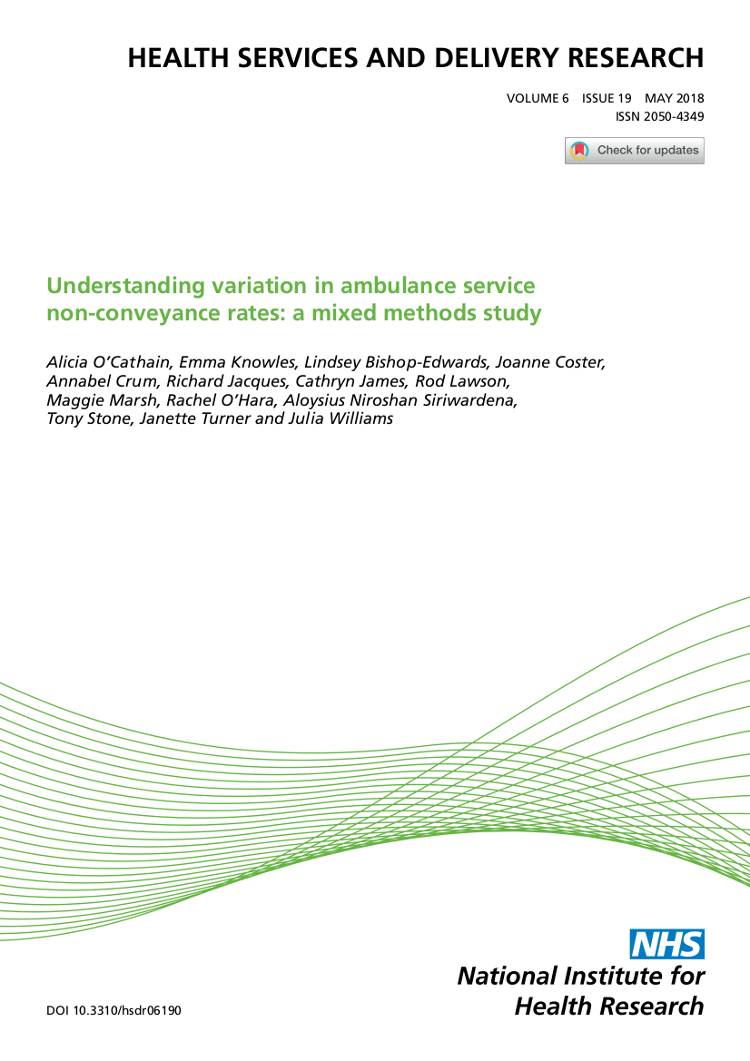
Summary of the VAN Study
NHS England proposes a shift within the NHS to offer emergency and urgent care closer to patients’ homes.
The ambulance service in England has fulfilled this remit for a number of years by not conveying a large proportion of urgent calls to an emergency department. In 2015/16 ambulance services responded to nearly 11 million calls at a cost of around £1.8B.
Of the 11 million patients calling ambulance services in England in 2015/16, around half were not taken to an emergency department; 1 in 10 patients was given telephone advice only and four in10 patients were sent an ambulance and then left at home. Some of the 10 large ambulance services in England do much more of this ‘non-conveyance’ than others.
The research looked at why rates vary so much between ambulance services. Staff were interviewed and data analysed about calls in 10 ambulance services. In three ambulance services with different rates of telephone advice, it was looked in detail at how they did this work.
In one ambulance service, they followed up patients to measure how many people ended up in an emergency department or a hospital bed, or died within 3 days of non-conveyance.
It was found that that some variation in non-conveyance rates between ambulance services was likely to be due to how services calculated these rates. This was particularly the case for rates of telephone advice.
Rates of non-conveyance depended on the types of patients calling, but this did not explain why ambulance services had different rates of non-conveyance. Ambulance services that had more calls dealt with by paramedics with extra training (known as advanced paramedics), and for which staff interviewed described these advanced paramedics as forming a well-established and valued part of their service, had higher rates of non-conveyance.
Ambulance services in which management viewed non-conveyance as risky, according to the staff interviewed, had lower non-conveyance rates. A minority of patients who were left at home ended up at an emergency department within 3 days.
Aim and objectives of the VAN Study
The aim of the research was to explore reasons for variation in non-conveyance rates between ambulance services. The objectives were to:
1. explore the perceptions of ambulance service managers, paramedics and commissioners of factors affecting variation in different types of non-conveyance
2. identify the determinants of variation between ambulance services for different types of non-conveyance
3. identify the determinants of variation between services in rates of 24-hour recontact with the ambulance service
4. explore variation in the provision of telephone advice in three ambulance services with different rates of calls ending in telephone advice
5. assess the safety and appropriateness of non-conveyance in one ambulance service
6. explore the determinants of variation when patients call with breathing problems.
The Full Report is available here, and the Summary Report can be read here.
